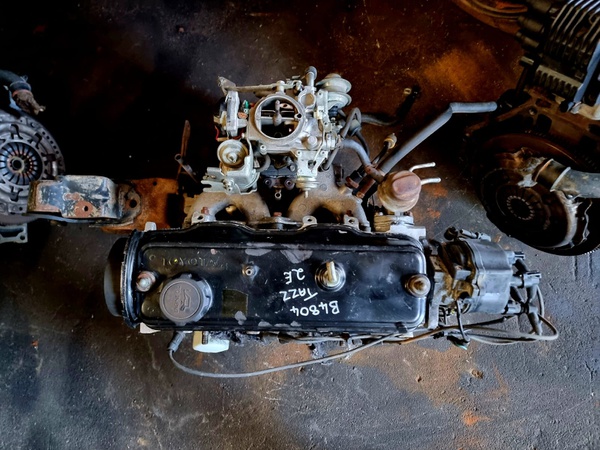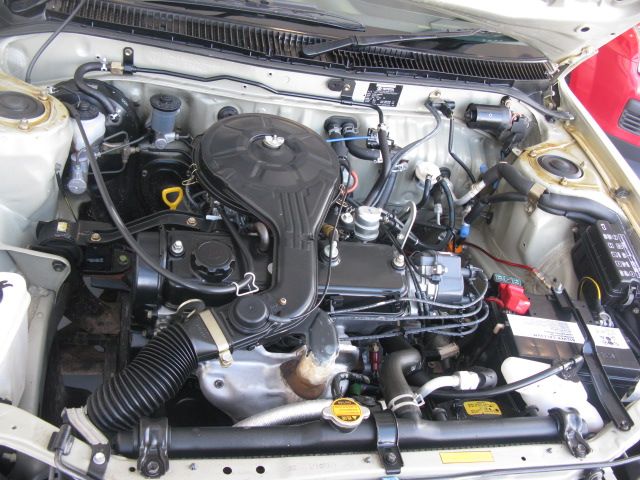Explore the most recent Fads in Engine Technology Through Tazz
In the quickly progressing landscape of auto technology, Tazz stands at the forefront, highlighting considerable improvements in engine systems that focus on both technology and sustainability. tazz. From crossbreed engines that maximize gas efficiency to the emergence of hydrogen fuel cells, the trends shaping contemporary powertrains are not just enhancing efficiency yet additionally addressing crucial environmental challenges. As the industry continues to press borders, it is vital to consider just how these growths will certainly affect future transportation services and the wider implications for global power intake. What exists ahead in this pivotal transformation?
Crossbreed Engine Innovations
Hybrid engine innovations stand for a critical change in vehicle technology, incorporating the benefits of inner combustion engines with electrical propulsion systems. This combination not only improves fuel effectiveness but additionally decreases exhausts, meeting increasingly stringent ecological regulations. By making use of both energy resources, hybrid engines can optimize performance, supplying power when needed while preserving fuel throughout much less demanding motoring conditions.
Recent innovations in hybrid modern technology include enhancements in battery performance and regenerative braking systems. These technologies enable higher power recovery during slowdown, which can be redirected to help in velocity or power accessory systems. Additionally, suppliers are focusing on compact styles and light-weight products to make best use of the efficiency of hybrid powertrains.
The growth of plug-in hybrids has also broadened the marketplace, making it possible for vehicle drivers to bill their vehicles using conventional electric outlets. This feature typically enables considerable all-electric array, more lowering dependancy on typical gas. tazz. As the auto sector remains to progress, hybrid engine modern technologies are anticipated to play a crucial role in linking the gap between conventional vehicles and totally electrical versions, supplying a transitional option that accommodates diverse consumer demands and choices
Developments in Electric Powertrains
The vehicle landscape is quickly developing, with electric powertrains becoming a leading pressure in sustainable transportation. Breakthroughs in electrical car (EV) technology are significantly boosting customer, performance, and efficiency experience. Secret developments consist of enhancements in battery chemistry, which have actually boosted energy thickness, decreased billing times, and prolonged total battery life.
Solid-state batteries, for instance, promise to reinvent the market by giving greater safety and security and effectiveness contrasted to conventional lithium-ion cells. Furthermore, improvements in regenerative braking systems are allowing vehicles to recuperate power during slowdown, contributing to general performance.
In enhancement to battery modern technology, electrical motor styles are becoming more sophisticated. Advancements such as integrated electric motors and advanced thermal management systems are assisting to optimize power shipment and minimize weight, inevitably improving automobile dynamics.

Jointly, these developments emphasize the dedication to shift towards cleaner, much more efficient transportation solutions, placing electrical powertrains at the leading edge of automobile development.
The Rise of Hydrogen Fuel Cells
Significantly, hydrogen gas cells are getting traction as a practical alternative to traditional inner burning engines and battery electric vehicles. This modern technology uses the chemical power stored in hydrogen, transforming it right into electrical energy through an electrochemical response with oxygen. The main by-product of this process is water, making hydrogen gas cells an ecologically friendly alternative with no exhausts at the tailpipe.

Automakers are progressively buying hydrogen gas cell technology, acknowledging its capacity for long-range applications and quick refueling capabilities that match traditional gas. In addition, fields such as heavy-duty transport and public transit are especially appropriate for hydrogen fuel cells, where battery electrical options might fail as a result of weight and array limitations.
As research and investment remain to expand, hydrogen fuel cells are poised to play a significant role in the future landscape of clean transportation and energy solutions.
Enhancements in Internal Combustion Engines
Innovations in interior combustion engine (ICE) modern technology are changing traditional lorries to meet modern ecological standards and efficiency assumptions. Straight gas shot, for circumstances, allows for far better atomization of gas, leading to more full combustion and boosted power outcome.
Additionally, turbocharging has actually acquired prominence, enabling smaller engines to supply higher efficiency without the weight of larger engines - tazz. This modern technology not only enhances effectiveness yet likewise adds to reduce gas usage. Variable shutoff timing systems are likewise being improved, allowing engines to adjust to various driving problems for improved torque and responsiveness
Additionally, making use of light-weight products in engine building is coming to be conventional, more improving gas efficiency by minimizing total car weight. Engine control systems (ECUs) are increasingly advanced, making it possible for real-time modifications that maximize efficiency and emissions.
These improvements jointly signify a critical change in ICE modern technology, aligning with worldwide sustainability objectives while still providing the performance motorists get out of their vehicles. As the industry progresses, these renovations remain to look at this site shape the future of conventional vehicle design.
Future Fads in Engine Efficiency
Significant developments in engine effectiveness are expected as suppliers concentrate on incorporating cutting-edge technologies to meet strict environmental guidelines a fantastic read and customer needs. The shift towards electrification, crossbreed systems, and alternate fuels is reshaping the automobile landscape, driving developments that improve fuel economic climate and minimize discharges.
One of the crucial patterns is the application of advanced materials and manufacturing techniques. High-strength alloys and light-weight compounds add to decreased car weight, thus improving total performance. Furthermore, the adoption of turbocharging and variable valve timing technologies enables boosted power outcome from smaller engines, further boosting gas economic climate.

Final Thought
In verdict, the exploration of engine modern technology exposes substantial improvements that focus on sustainability and effectiveness. Technologies in hybrid engine systems, electrical powertrains, and hydrogen fuel cells demonstrate a dedication to decreasing exhausts while enhancing performance. Improvements in interior burning engines and a focus on lightweight products add to overall engine effectiveness. As the auto industry remains to progress, these fads will play an important duty in forming a cleaner and more sustainable future for transport.
From hybrid engines that enhance gas performance to the introduction of hydrogen gas cells, the fads forming modern-day powertrains are not just enhancing performance but also dealing with important ecological obstacles.Crossbreed engine technologies stand for a crucial change in auto modern technology, incorporating the advantages of inner burning engines with electrical propulsion systems.Furthermore, turbocharging has acquired prominence, allowing smaller sized engines to supply greater efficiency without the weight of larger engines. Additionally, the adoption of turbocharging and variable shutoff timing modern technologies enables for enhanced power output from smaller engines, better boosting gas economic climate.
Improvements in internal burning engines and an emphasis on lightweight products add to general engine efficiency.